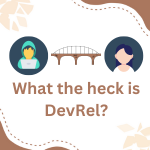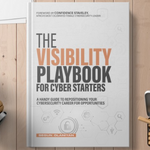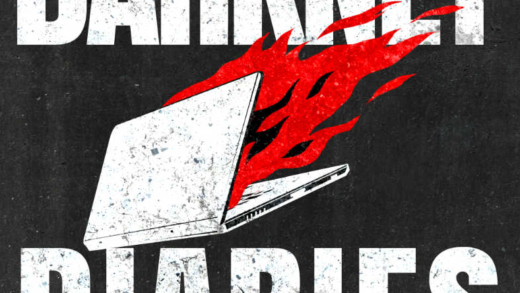I often get asked how one should set up his or her LinkedIn profile. Frankly, I use LinkedIn a lot, and I guess it’s the social platform where I publish the majority of my posts. Not sure why, but people started assuming that I was some kind of LinkedIn guru, which I am not. But I have put together some of the tips you can leverage in order to improve your profile.
Let me clarify one thing right from the get-go. I am not some kind of LinkedIn sensei you should be blindly following (although if you like my content, I would appreciate it if you gave me a follow 😉 ). I myself am not following every piece of advice.
Photo tells a story about you
Visuals are the ones that usually attract attention. That means that you should pay a lot of attention to your profile picture and banner. The photo you choose tells a story about you. For example, my photo sets the impression of a quirky, geeky, and outgoing person, and it’s definitely not professional. How do I know that? Well, I have asked multiple people I know (but those might be biased because they know me pretty well) and then checked my picture with Photofeeler. The app provides you with the rating of your photo based on which category (business, dating, social, etc.) you select. This example shows the selection of a business-style photo and rating it on the metrics of competency, likeability, and influence.

The ideal size for a profile picture on LinkedIn is 400×400 pixels. You can use the Photoaid tools for basic editing of the photo. If you are not as lazy as I am, you should spend enough time to make sure that your profile photo is stellar, as it’s visible most of the time. Whenever you write a new post or make an update to your profile page, everyone will see your picture. So make sure it’s perfect!
Utilize the banner
Many people forget about their banner. It’s an essential part of your LinkedIn profile, as it allows you to share more information about yourself. It can mention a quote that you personally align with or just contain a couple of keywords you are associated with. It can also be a photo of anything that represents you as an individual or a color transition that matches the overall color theme of your photo. If you are interested in which colors complement each other, you can use Paletton to find the synergies. Basically anything is better than having just a plain and simple default banner.
Take, for example, a look at the banner I am using. I have created it myself, and it covers the areas I am interested in and what I stand for. At first glance, everyone can see that my name is Hung and my surname is Ngo, that I am interested in DevSecOps and AppSec, and that I have this blog.

If you are curious how you can create this banner yourself, I highly recommend that you check out Canva. It’s a free tool that will allow you to do wonders when it comes to graphics. By now, you have probably realized that I am not that artistic and that I tend to use tools to generate almost all the graphics I use. Canva is great for people like me, as it contains thousands of templates that you can easily tweak to fit your needs. I made this banner in less than half an hour.
Headline that will attract the head hunters
Another way to upgrade your profile is to create a creative headline that will set you apart from others. It can cover your title and the name of the company or just your motto. Just don’t go overboard with the titles and stay true to reality. 🙂

Writing a snazzy introduction
So, you already have a visitor hooked up to your photo, banner, and headline. The next step is to slam them with a nicely written introduction about yourself. There are multiple ways you can write one. You can introduce yourself from the point of view of another person. Or you can turn it into bullet points presenting you and your achievements. I personally prefer this way, as it’s much more visually appealing and faster for me to read when things are presented as a list.

note: Just a small tip. Don’t go over the board with the usage of adjectives, as that will trigger the LinkedIn featured search algorithm and get your profile displayed less.
Levelling up your experience section
Your “experience” session should be accurate and up-to-date. It’s a representation of your career. Don’t try to lie, as others will find out if you weren’t honest in the end. You can also link the skills you have used or gained (such as various technologies, tools, and methodologies) to your experience, making it easy for the viewer to see which technologies you have used throughout your jobs. Mentioning your important achievements is good as well. If you are under an NDA, as I am, then you should be careful about what you are sharing. Just anonymize all the information, and you should be okay.
note: Another small tip is that you can set up your profile in multiple languages, making it easy for everyone to read. I personally don’t do that, as it has been a hustle for me to set it up and keep it updated in multiple language versions. If you are a non-native English speaker, you can leverage tools such as Quillbot to make sure that your grammar won’t make your viewers cry.
Skills, endorsements, and recommendations
One of the reasons I like LinkedIn over the classical CV is that you can use it to display your skills and get endorsements from other professionals vouching for your really having these abilities. You can also link certain certificates through which you have obtained such skills. I personally don’t do that and go for a linear style of my profile, with each skill only displaying the number of endorsements and whether I have obtained the LinkedIn badge or not. LinkedIn badges are a fun way to pimp up your profile, but they are sometimes not that easy to obtain. Only the top couple of percent of the people taking the test will get the badge, and if you fail, you have to wait half a year to take the same category test again. In addition to that, there are several dumps available on the internet, so that’s why I am not paying the badges that much attention nowadays.
Some time ago, I was unemployed (for three days), and in this short period of time, I was approached by multiple people (or one cunning individual) offering to write me a recommendation on LinkedIn for a small fee. Ultimately, in the end, it’s your decision to make, but for me, recommendations and endorsements that are built on truth, are much more valuable.
Posts and articles
As with every social media site, LinkedIn is optimized around sharing content through posts and articles. Posting can increase your visibility as well as get the information to your network. The main difference between a post and an article is that posts are usually shorter, whereas articles allow you to go much more creative, but they are less promoted by LinkedIn, and in the end, they will get viewed less.
The frequency of your posts also matters when you want to build a strong network of contacts. You don’t have to post daily, but publishing a couple of posts a week will help you steadily increase the number of followers. As with everything, consistency matters. If you show that you are active and post consistently, people will naturally follow you.
LinkedIn vs regular CV
By now, you might be wondering whether you should just use LinkedIn and shred your formal paper based CV or to keep it. Well, when I first discovered LinkedIn, I have stopped updating my regular CV. Some time ago I got asked to provide one, so now I am keeping even that copy up to date, but I still prefer LinkedIn. Why is that?
- On LinkedIn, you much easily see a person’s activity
- You can receive endorsements and recommendations on LinkedIn
- I have once read that nearly 77% people are lying on their resume, it is not that easy to lie on the social site
- Viewers can much easily see the outreach you have
- You are not limited to the usual 1 A4 paper format
Premium – is worth?
After using LinkedIn for some time, you will be prompted with the offer of a free premium membership for 30 days. You might wonder whether it is worth using the premium. Based on what your goals are, premium comes with a lot of interesting perks that are split into multiple tiers. It might seem overwhelming at first, but don’t worry. In the near future, I am planning on writing an article comparing all the packages to help you find the one that would bring you the most benefit for a reasonable price. Take it as a little foreshadowing. 😉
If you have read so far, you might want to follow me here on Hashnode. Feel free to connect with me over at LinkedIn or Mastodon.




